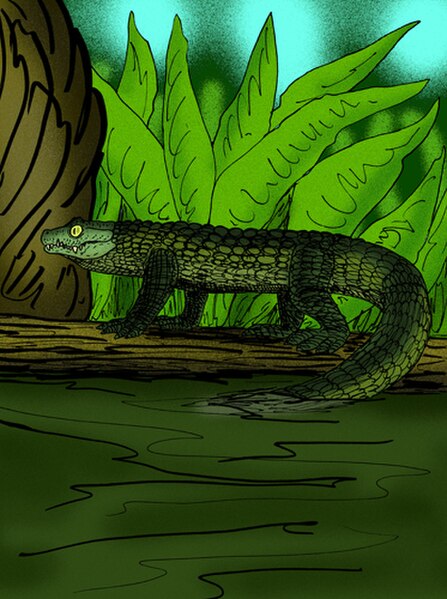Quinkana is an extinct genus of mekosuchine crocodylians that lived in Australia from about 25 million to about 10,000 years ago, with the majority of fossils having been found in Queensland. Four species are currently recognized, all of which have been named between 1981 and 1997. The two best understood species are Q. fortirostrum, the type species, and Q. timara, a more gracile form from the Miocene. The other two species, Q. babarra and Q. meboldi, from the Pliocene and Oligocene respectively, are only known from a few poorly preserved bone fragments. The name Quinkana comes from the "Quinkans", a legendary folk spirit from Gugu-Yalanji mythology.
Quinkana
Quinkan rock art near Laura, Queensland. These spirits are the namesake of Quinkana.
The holotype specimens of the four Quinkana species. Quinkana mebolid (a), Quinkana timara (b), Quinkana babarra (c) and Quinkana fortirostrum (d) were all described from skull remains of varying quality.
While no associated limb and skull fossils are known, pelvic form four suggest that at least one mekosuchine had a more upright posture and could therefore represent Quinkana.
Mekosuchinae is an extinct clade of crocodilians from the Cenozoic of Australasia. They represented the dominant group of crocodilians in the region during most of the Cenozoic. They first appear in the fossil record in the Eocene in Australia, and survived until the arrival of humans: in the Late Pleistocene in Australia and within the Holocene in the Pacific islands of Fiji, New Caledonia and Vanuatu.
Mekosuchinae
Mekosuchus inexpectatus





